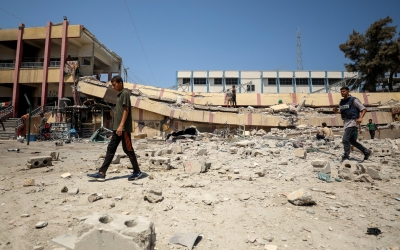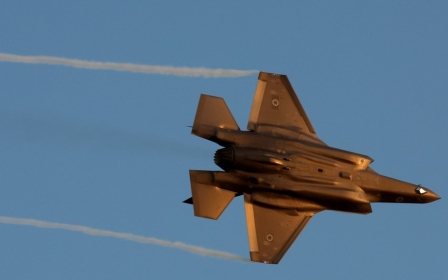Revealed: Israel's own footage of Gaza air strikes documents 'devastating' civilian harm

An analysis of hundreds of video clips released by the Israeli military has uncovered further evidence that Israeli air strikes on Gaza over the past year have been far from precise, leading to "devastating levels of civilian harm", a British war monitor says in a film released on Wednesday.
Airwars reviewed hours of footage of Israeli strikes on the enclave, geolocating them and matching them to incidents where Palestinians had publicly reported that civilians had been harmed.
In the first month of the war alone, Airwars said it found 17 incidents in which footage released by the Israeli military matched the exact location of where the monitor had documented civilians killed or wounded.
More than 400 Palestinian civilians, including more than 200 children, were reportedly killed in those 17 clips which represent 1 percent of all footage released in the past year, the organisation said in the film about their investigation.
Emily Tripp, Airwars' director, described the Israeli military videos as "grainy black and white clips with few details, but captions declaring they were striking Hamas targets".
New MEE newsletter: Jerusalem Dispatch
Sign up to get the latest insights and analysis on Israel-Palestine, alongside Turkey Unpacked and other MEE newsletters
"The message they wanted the world to see was one of a precise campaign, a controlled narrative of careful and calculated warfare," Tripp said.
But by locating the clips and matching them to civilian harm, she said Airwars had uncovered a different story.
"Even in the strikes the Israeli military itself published footage of - the ones it chose to show the world - we found hundreds of civilians killed. This is yet more evidence that the practices of the Israeli military are leading to unprecedented levels of civilian harm," she said.
In one air strike that hit the residential al-Taj tower on 25 October, Airwars identified at least 101 civilians killed, including 44 children and 37 women. The Israeli army said that it was targeting a Hamas tunnel, but failed to provide evidence to support the claim. It also did not give prior warning to the residents of the tower.
Airwars said the Israeli military declined to be interviewed, but released a lengthy statement which said the investigation was "extremely concerning" with a predetermined narrative.
"Many of the accusations and claims presented in the investigation are baseless and constitute speculation, raising concerns about the intent behind the investigation presented," the statement said.
Lawyers interviewed in the film say they believe the footage could ultimately be used against the Israeli military in legal proceedings.
'It's definitely and absolutely the case that these videos could be used as criminal evidence'
- Dearbhla Minogue, GLAN
Airwars' analysis shows that footage released by the Israeli military significantly decreased in January, the same month South Africa announced it was taking Israel to the International Court of Justice on allegations of genocide.
"It's definitely and absolutely the case that these videos could be used as criminal evidence against Israeli defendants because they show so much," said Dearbhla Minogue, a lawyer with the UK-based Global Legal Action Network.
One of the elements of war crimes needed to be satisfied under the Rome Statute of the International Criminal Court is that the perpetrator directed an attack, Minogue said.
"So if the perpetrator has published its own video of them directing an attack, then that's one element quite clearly satisfied," she said.
Middle East Eye delivers independent and unrivalled coverage and analysis of the Middle East, North Africa and beyond. To learn more about republishing this content and the associated fees, please fill out this form. More about MEE can be found here.





